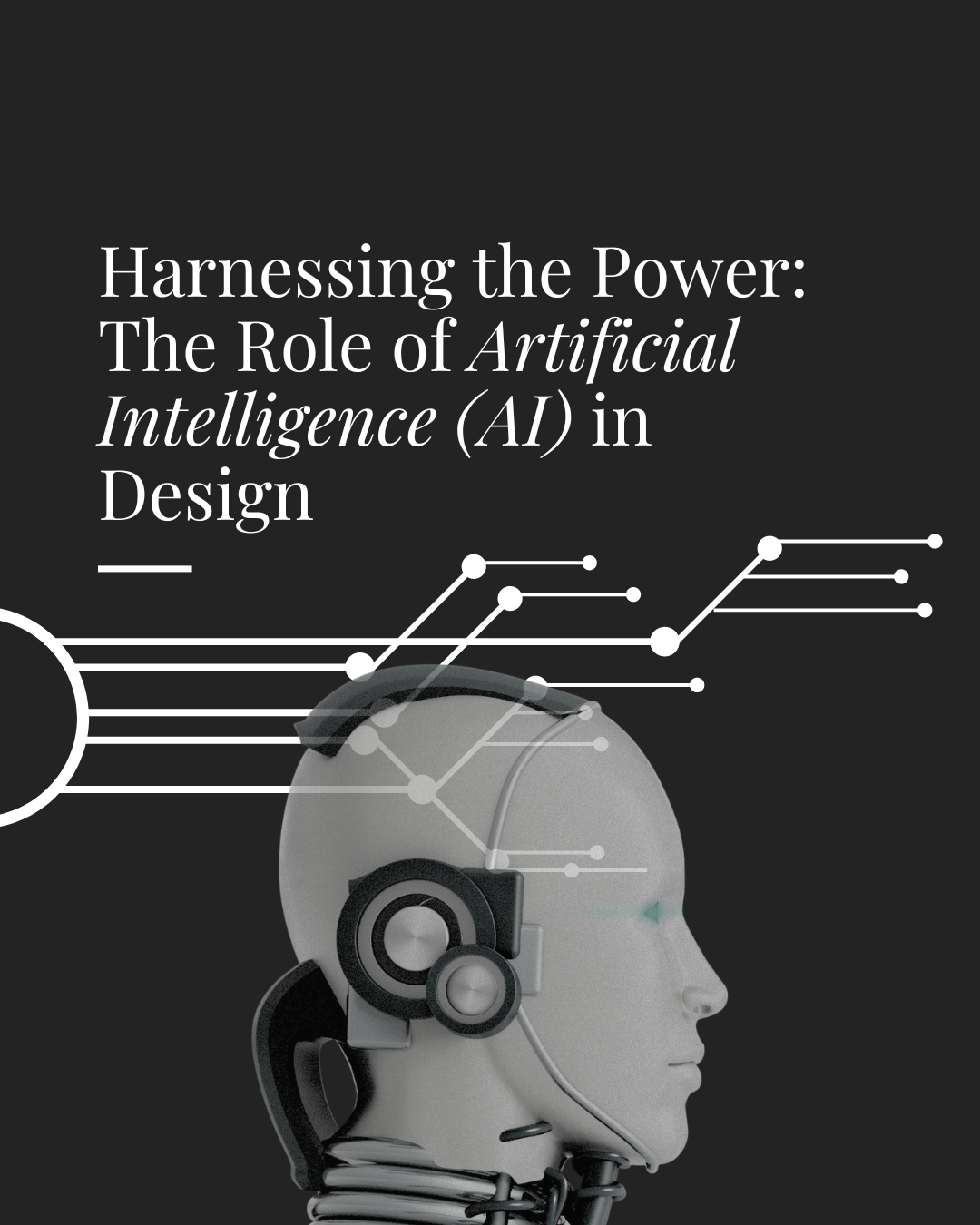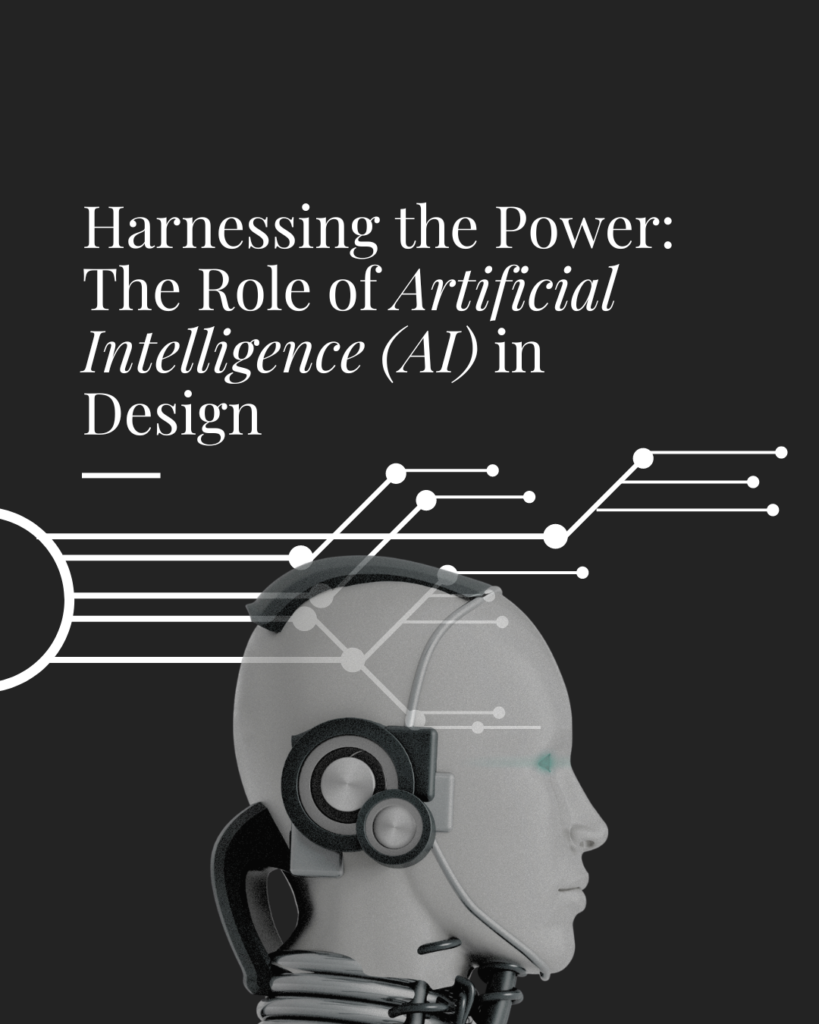The Blog
Harnessing the Power: The Role of Artificial Intelligence (AI) in Design

In the ever-evolving landscape of design, one element stands out as a game-changer: Artificial Intelligence (AI). As technology continues to advance at an unprecedented pace, AI is revolutionizing the way designers approach their craft. From streamlining workflows to unlocking unprecedented creativity, the integration of AI into design processes has become indispensable for businesses striving to stay ahead in a competitive market.

Streamlining Workflows
AI-powered tools have streamlined design workflows, enabling designers to accomplish tasks more efficiently than ever before. Automation features in design software can handle repetitive tasks, such as resizing images or generating colour palettes, freeing up valuable time for designers to focus on more creative aspects of their work. This increased efficiency not only boosts productivity but also allows for faster turnaround times, helping businesses meet tight deadlines without compromising quality.
Enhancing Creativity
Contrary to the fear that AI might replace human creativity, it has actually enhanced it. AI algorithms can analyze vast amounts of data and generate insights that human designers might overlook, leading to more informed design decisions. Additionally, AI-driven tools can suggest design elements based on user preferences and trends, sparking new ideas and pushing the boundaries of creativity. By augmenting human creativity rather than replacing it, AI empowers designers to explore new possibilities and deliver innovative solutions to clients.
Personalized Experiences
In today’s digital age, personalization is key to engaging consumers and building brand loyalty. AI plays a crucial role in achieving this by enabling designers to create personalized experiences tailored to individual users. By analyzing user data and behavior, AI algorithms can deliver customized content, recommendations, and user interfaces that resonate with each user on a personal level. This level of personalization not only enhances the user experience but also drives conversions and fosters long-term customer relationships.
Predictive Design
One of the most exciting applications of AI in design is predictive design. By leveraging machine learning algorithms, designers can anticipate user needs and preferences, allowing them to design products and interfaces that adapt to user behavior in real-time. Whether it’s predicting the next step in a user’s journey or anticipating future trends, predictive design enables designers to stay one step ahead and deliver experiences that exceed user expectations.
Ethical Considerations
While the potential of AI in design is vast, it’s essential to address the ethical considerations that come with it. Designers must ensure that AI-powered systems are transparent, fair, and unbiased, and that they prioritize user privacy and data security. Additionally, designers should remain mindful of the potential impact of AI on job displacement and work to mitigate any negative consequences through up-skilling and re-skilling initiatives.
In conclusion, AI has emerged as a powerful ally in the world of design, offering new opportunities to streamline workflows, enhance creativity, and deliver personalized experiences. By embracing AI-driven technologies, design businesses can unlock new levels of efficiency and innovation, staying ahead of the curve in an increasingly competitive landscape. However, it’s essential to approach AI integration with caution, prioritizing ethical considerations and ensuring that human creativity remains at the forefront of the design process. As we continue to harness the power of AI, the possibilities for innovation in design are limitless.
By Alice Bowyer | February 22nd, 2024
Comments will load here
Be the first to comment